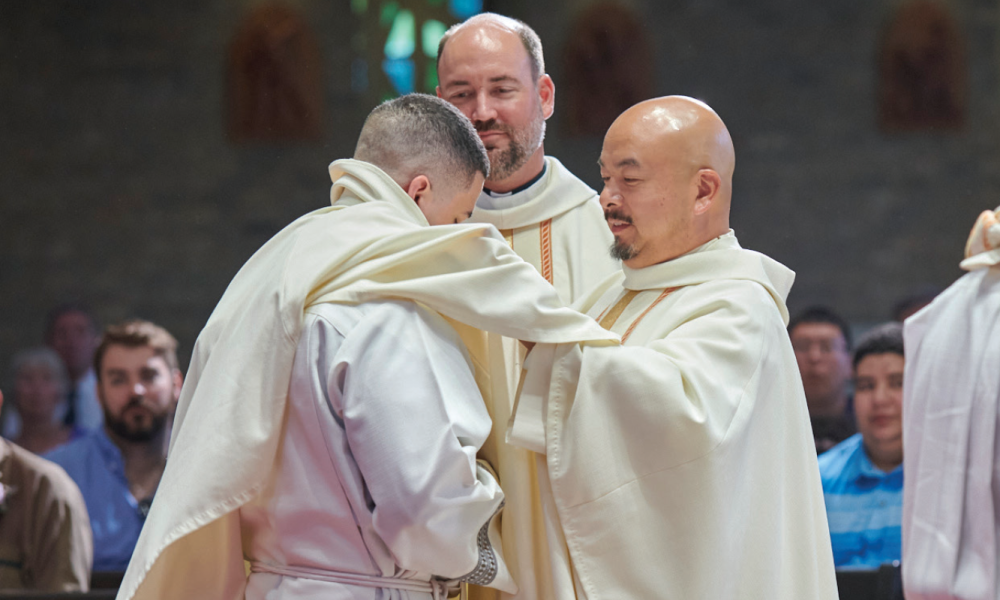
Why priestly vestments really matter
We Catholics love our attire. To name but a few examples, our babies have their baptismal garments, our altar servers their robes, our nuns their varying habits, our communicants their veils, and some of our children, their Catholic school uniforms. Mine was the quintessential green plaid.
We Catholics love our attire. To name but a few examples, our babies have their baptismal garments, our altar servers their robes, our nuns their varying habits, our communicants their veils, and some of our children, their Catholic school uniforms. Mine was the quintessential green plaid.
These articles of clothing are not arbitrary. Rather, they speak of roles and preparation. They remind us of who we are and who we want to be. They name us and claim us. Ultimately, these outward symbols teach us about more important interior, spiritual realities.
It was when my own brother was ordained to the priesthood that I began to think more deeply about holy attire, namely the vestments of our priests, what they mean, and why they really matter.
The rite of ordination is an extraordinary thing in itself and if you haven’t been to an ordination Mass, I highly encourage you to go at the first opportunity. And while there are many moving aspects to the rite, there are a few moments that truly stand out.
Prostration
The first is when all of the men presented for ordination go “nose to the marble,” lying prostrate on the altar as the congregation sings the long and thorough Litany of the Saints, begging their intercession over the lives of these individuals as they enter into the fullness of their vocation.
There can be no action quite so telling as a grown man lying prostrate before hundreds of onlookers – including his family. My brother had worked in business before entering seminary and had been very accomplished. And then, he barely owned a thing and was lying prostrate on marble, literally laying down his life before the Lord.
Laying on of hands
Immediately following this is “the laying on of hands,” first by the archbishop or bishop, and then by all of the other priests in attendance. One by one, they pause before each kneeling man, praying with an intensity and reverence you can practically feel. It is during this highly concentrated moment of prayer that ordination is truly conveyed – my brother and the others were no longer deacons but had received the indelible mark of “priest.”
Vesting
Then, they are vested.
Priestly vestments are visual reminders to those of us at Mass that the priest has been especially prepared for his role at the altar and that his calling is different from ours. The two most distinct pieces to priestly vestments are the alb and the chasuble.
I never want to forget this important fact: It is not until the man has lain there, prostrate, offering his entire life to God, that he receives the sacrament of ordination and he receives his vestments.
Our faith asks a great deal of us, especially our priests. And I love that about being Catholic.
The alb is the white linen robe worn underneath the more colorful chasuble and is a symbol of purity and innocence.
The chasuble is generally one of four colors: red, white, violet or green. Red is worn on the feast days that remember the martyred saints who shed their blood for their faith. It is also the color of fire and is worn on feast days, such as Pentecost, that honor the Holy Spirit. White is a symbol of glory, innocence or purity and is used on various feast days of our Lady, angels and saints who were not martyred. Violet is worn during the seasons of preparation, Lent and Advent, and is also a symbol of penance. Green, symbolic of hope and growth of the Church, is worn during Ordinary Time.
Elizabeth M. Kelly is a Catholic author and speaker; she writes a monthly column titled “Your Heart, His Home.”
